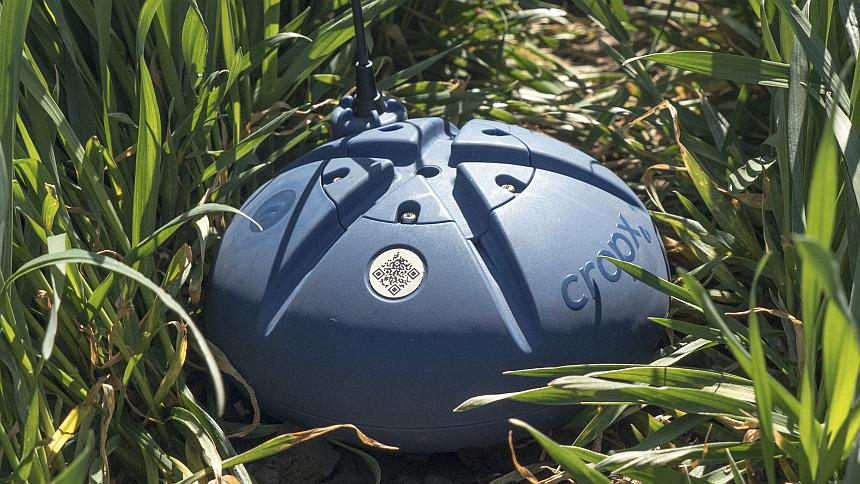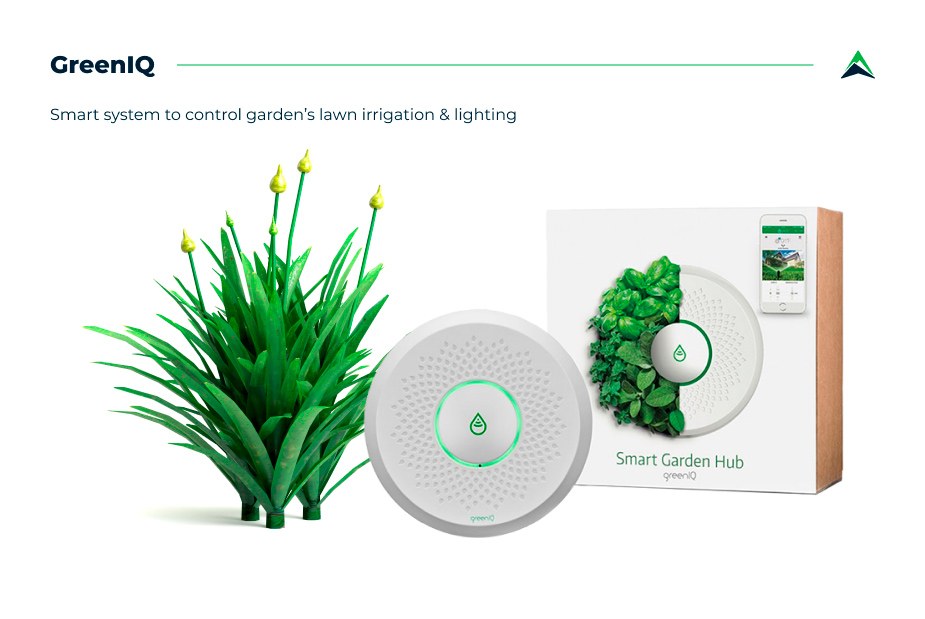The article was updated on March 2, 2023.
Of all the IoT-enabled solutions, smart agriculture systems unmistakably stand out. Being one of the core sectors in the global economy, agriculture also boasts the most dynamic rates of IoT adoption. The industry has solid reasons to embrace innovations: by 2050, the global population is predicted to reach 10 billion.
Given such prospects, the importance of agriculture monitoring is difficult to overlook. Obviously, those companies that manage to satisfy the growing demand for organic food products through the use of agriculture monitoring systems will gain a distinct competitive edge.
In this article, we will take a closer look at the range of existing agriculture monitoring solutions, explore the benefits of their use in various agricultural subsectors, and outline an approximate plan for their adoption. Read on to learn more.
The current agriculture industry challenges
Agriculture is rightfully considered to be one of the most resource and labor intensive industries. The challenges farmers face today include, but aren’t limited to the following:

Regular equipment maintenance
Agriculture as an industry is heavily dependent on machinery. Maintenance operations, even scheduled regularly, consume time and impact the budget; but nevertheless, fail to eliminate the unpredictability factor. Once a piece of equipment accidentally goes out of order, it usually leads to unexpected downtimes.
Correct water estimates
Growing plants need water, but the amounts of it differ depending on soil humidity levels. To measure these levels, farmers have to go to the field and take regular manual tests – alternatively, they could use smart sensing technology, which is by far, more accurate, convenient, and time efficient.
Eliminating water waste and overhead expenses
Failing to collect accurate soil humidity information may result in the underwatering or overwatering of the plants. Poorly watered plants are dry and frail, but overwatering creates water waste and involves unpredicted water expenses.
Estimating correct planting times
Each plant has its own optimal planting time depending on a range of environmental factors. However, it is often difficult to correctly estimate this time without accurate data.
Measuring soil temperature and moisture levels
Soil temperature and moisture levels are key metrics farmers need to collect to estimate the state of crops and take appropriate action. Unfortunately, it’s usually impossible to measure them correctly without IoT agriculture monitoring systems.
Pest control
Successful pest control involving detecting pests, their location, activity and behavior patterns is another challenge farmers have to face. Understandably, this challenge is also quite difficult to meet without IoT based pest control systems.
Smart agriculture monitoring solutions
IBM predicts, the use of IoT will enable farmers to increase production rates by 70% by the end of 2050, so, all in all, the future looks optimistic. One way or the other, IoT has a lot to offer in terms of alleviating the pains farmers regularly face.
Agritech is a thriving industry, and, as of today, an extensive range of smart farming systems enables farmers to meet their daily challenges. Planting, watering, crop gathering and pest control – agriculture field monitoring collects a range of metrics farmers can act on to manage these tasks effectively.
Below are some examples of smart agriculture monitoring solutions and how they work.

1. Soil condition monitoring
Soil condition is an important indicator helping farmers decide on the optimal planting, and crop gathering time. With IoT sensors performing soil condition monitoring, farmers get instantly alerted of soil moisture and salinity. Other metrics include soil temperature and air temperature: estimating them correctly enables farmers to plan watering times and know when to expect pests.
Soil condition monitoring requires a combination of hardware and software systems to operate in real-time and alert users on any significant changes.
An example of such a solution is CropX – an ag-tech platform for agriculture remote monitoring. It uses smart agriculture sensors to collect data, and a cloud infrastructure for data processing and storage to deliver information in a readable format to a user’s computer or smartphone screen.

2. Weather monitoring
Weather monitoring in agriculture is one of the most frequent application fields for IoT. In crop farming, yields are heavily dependent on the environment, which is inherently volatile. Weather monitoring solutions located directly in the field (such as the ones used by weather stations), alert farmers on changing weather conditions – temperature, precipitation, humidity, sun radiation, and wind speed.
Weather monitoring platforms like Pycno, allMETEO, and Smart Element are vivid examples of how the application of smart sensing technology in agriculture helps deliver effective weather notifications directly to farmers’ laptops and smartphones, enabling them to immediately take action.

3. Greenhouse automation systems
A fragile and sensitive greenhouse ecosystem requires incessant maintenance and control. Smart agriculture solutions for greenhouse automation like Growlink, Farmapp, and GreenIQ illustrate the application of remote sensing in agriculture. They help maintain optimal microclimate conditions and manage lighting, humidity, CO2 and temperature levels. Instant alerts and increased management capabilities maximize the efficiency of greenhouse farming.
4. Crop monitoring systems
As crops grow and ripen, so many things can go wrong: diseases, infestations with pests, or adverse environmental conditions can potentially cause irrevocable harm before farmers even notice. Applied in crop monitoring, smart sensing technology collects metrics about the state of the crops (temperature, humidity, health indicators) and enables farmers take timely measures should anything go wrong.
Moreover, systems like Semios and Arable help detect when the crop is ripe, enabling farmers to plan exact harvesting times.

5. Digital pest management
Pest infestations are some of the pains crop farmers face on a regular basis. Knowing when pests arrive can be challenging, but also pinpointing their activity and location is normally impossible without making frequent trips to the field. Smart agriculture monitoring systems tackle these problems; moreover, they also help allocate the exact amount of chemicals needed to eliminate pests in each particular case.
IoT pest detection systems like Strider count insects and determine their locations in real-time using an insect camera and sensors for crop pest detection placed directly in the field. Ag-tech companies like Fieldin and DTN offer similar solutions for IoT-based pest control.
6. Livestock monitoring systems
Apart from crop and weather monitoring, agriculture monitoring solutions are also gaining wider application in livestock farming. By combining sophisticated IoT hardware such as wearables based on smart-sensing technology with state-of-the art IoT software, ag-tech solutions like Cowlar help guard and protect livestock.
SCR is another company specializing in agriculture remote monitoring using cow neck collars to track cow health, location, and activity. Remote sensing in agriculture, combined with advanced analytical software delivers insights on cow nutrition and on the health of the entire herd.

7. End-to-end farm management systems
From greenhouses to grazing fields, the entire farm area can accommodate smart agriculture sensors acting as important data collecting points for a powerful, all-encompassing farm management system. Surely, such systems should leverage advanced data analytics software and integrate seamlessly with accounting and procurement databases to deliver insights and fully unveil their analytical potential.
Cropio and Farmlogs are examples of companies offering end-to-end agritech solutions for remote farm management based on IoT agriculture monitoring.
The Benefits of using IoT monitoring solutions in agriculture
So, how does monitoring and recording data improve agriculture? The range of agriculture remote monitoring applications is quite extensive, and so is their combined effect on livestock and crop farming.
All in all, the use of IoT monitoring solutions accounts for the following:
Maximized productivity
Agriculture crop monitoring using IoT and taking timely measures to eliminate the usual threats increases crop yields. In livestock farming, the use of IoT monitoring also makes for maximized productivity.
Improved quality
IoT monitoring systems help maintain optimal conditions to ensure better crop quality. For example, weather monitoring in agriculture helps estimate the exact supply of water, chemicals, and nutrients needed to grow high-quality crop yields. The farming products grown using IoT monitoring systems are also more capable of meeting market specifications than other products.
Reduced need for pesticides
Not only are pesticides toxic, their use also entails expenses. Smart pest monitoring systems significantly reduce the need for pesticides, the expenses involved, and the dangerous impact of chemicals on the environment and human health.
Predictability and control
Driven by realtime agriculture monitoring, data analytics predict the optimal harvest dates and ensure the security of supply contracts. The control farmers gain over time-to-market helps make farm processes more manageable.
Higher sales price
Obviously, greener, healthier products grown using the latest ag-technologies will have higher sales prices, and will ultimately bring more revenue.
Futurecasting
By collecting and processing data retrieved using smart agriculture monitoring, farmers can predict the future state of soils and environments, and plan for next year’s crops. Thus, predictive analytics enable them to make calculated farm-management decisions and plan for the years ahead.
Our work case of IoT solutions for agriculture
Our team at Eastern Peak has also contributed to the progress of IoT applications in agriculture. The IoT-powered irrigation application, GreenIQ, helps gardeners reduce water usage by 50%, monitor humidity levels, and predict the best timing for irrigation. GreenIQ uses smart sensors to analyze meteorological conditions and soil types, creating the perfect irrigation strategy and adapting to new environments.
The GreenIQ application also integrates with the most well-known home automation platforms. This app is another valuable contribution to eco-friendly gardening and one of many examples of how smart farming products can change the future of agriculture.

First steps in developing IoT monitoring solutions
Not every out-of-the-box smart farming solution will suit your individual needs. Sometimes an optimal IoT software for each particular farm has to be custom-made. So what is the best way to approach agtech solutions development?
The path from realizing the importance of IoT agriculture monitoring towards the implementation of smart agriculture solutions encompasses the 5 consequent steps:

1. Define your goals and purposes
Every farm has sensitive areas which need monitoring: If you live in an extremely dry climate, soil humidity monitoring could be your primary goal. The key goals you want to achieve will ultimately determine everything – from the sensor’s structure to the software architecture of your IoT solution.
2. Decide on the data transfer technology
Smart agriculture monitoring is all about collecting insights from data, but the data you collect on-site has to be sent to a processing unit. The choice of the data transfer technology will depend on the distance the data has to travel.
For example, if it’s only about 10 meters, the data could be perfectly transferable by Bluetooth. If the distance is several kilometers, the use of a low-power wide-area network (LPWAN) could be more appropriate.
3. Determine the key power sources
The data travel distance is also important because it directly impacts the IoT sensor’s battery life. You can manage power consumption by regulating the frequency of data transfers, or transfer fewer amounts of data. One way or the other, power consumption and power sources will require preliminary estimations.
4. Estimate the frequency of data collection
Power usage and sensor life will also depend on the frequency of data collection. How frequently does the data you need have to be collected in order to deliver value?
5. Consider sensor installation specifics
The installation of sensors could require complex manipulations or be relatively simple depending on their location. This is yet another important aspect you will have to discuss with your IoT solutions provider.
An advanced IoT based agriculture monitoring system reduces costs, maximizes efficiency, helps farmers make data driven decisions, and, ultimately, propels crop and livestock farming practices to higher levels of ethics and professionalism. Although, implementing smart monitoring systems requires time and investment, in the long run it usually proves worth the effort.
Developing custom agriculture monitoring solutions is an intricate process, often requiring expert advice. Feel free to contact our expert team now for a free consultation on the development and implementation of smart agriculture monitoring systems.
Read also:



